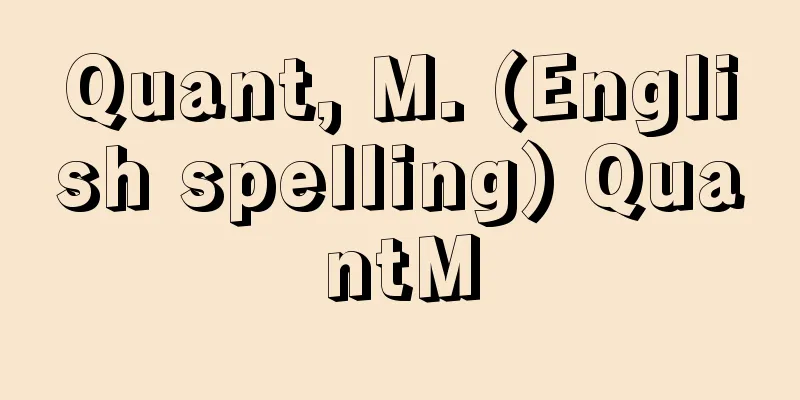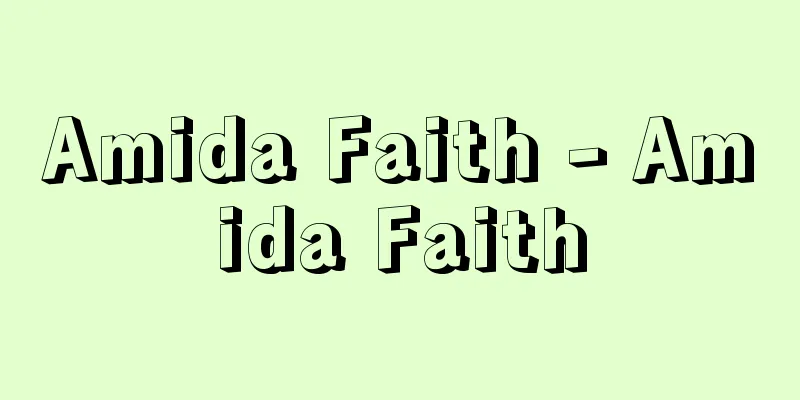School Play

|
It refers to theatrical activities carried out by children and students at elementary, junior high and high schools. However, today it has become a broader concept that also includes education in everyday expressive activities. In other words, it is the study of sensation, reaction, imagination, creation, improvisation, communication and evaluation, and can be seen as an educational activity that promotes the harmonious development of children's various qualities through various expressive experiences and play-making. In the West, for example, in British schools, performances of Shakespeare's plays are considered an important part of the national language education, and theater is positioned in school education as a means of passing on language culture that is not limited to reading and writing. Its history is long, dating back to the Renaissance. [Kousei Kuroda] HistoryLooking at the history of school plays in Japan, school performances that became popular in the 1900s had a strong entertainment value, such as imitating Kabuki. A complete facelift came after 1918 (Taisho 7), when the term "school plays" was first used by Obara Kuniyoshi, who promoted school plays as part of holistic education during the New Education Movement of the Taisho period. His book "School Drama Theory" (1923) was groundbreaking in its emphasis on the creative expression of children themselves. Tsubouchi Shoyo, a leader of the theater movement at the time, also played a major role in establishing children's plays. School plays were suppressed for a long time under the totalitarian ideology of the times, and it was not until after World War II that they were revived. However, the revival was remarkable, with competitions being held all over the country and research organizations for school plays being formed one after another. Examples include the Japan Children's Theatre Association and the Japan Theatre Education Federation. A large number of talented people were produced, including Ochiai Sozaburo (1910-95), Tomita Hiroyuki (1922-94), and Okada Akira (1923- ), who worked on theory and practice, including scriptwriting and directing. [Kousei Kuroda] regionThe treatment of school plays in the curriculum guidelines went through a period of decline in the 1950s and 60s, but with the revision in 1977 entitled "Leisurely and Fulfilling Education," they began to be used in various areas. Situations in which plays can be used in school life include: (1) vivid emotional expression in daily life, correct language and actions, (2) whole-school assemblies, ceremonies, events, (3) class meetings, student councils, and (4) school broadcasts. In the classroom, examples include: (1) pretend play, dramatic play, (2) action and dramatized learning, (3) birthday parties, class performances, etc. Furthermore, the experience of drama is recognized as an effective way to open the minds of children with disabilities and to develop abilities and confidence for social life. In the past, there was a tendency to focus too much on "showing plays" where the lines were memorized and the actions were taught. Even if the goal is to present a play, research is needed on methods to bring out children's free and creative expression in the process. In this sense, the British Movement (activities to learn about one's own physical functions and express images in one's mind) and the American Creative Dramatics (activities to stimulate children's imagination and create impromptu plays in groups) are attracting attention. In Japan, too, ideas to bring out free and improvised expression are used in each subject, especially in the area of "morals," and lessons that make use of "drama" and "role-playing" have become established. In early childhood education, the area of "expression" has been set as the content since the revision of the kindergarten education guidelines in 1988 (Showa 63) until the revision in 1998 (Heisei 10). The 1998 revision of the curriculum guidelines for elementary, junior high, and high schools included "integrated learning time," which is expected to further promote the development of children's creative forms of expression. [Kousei Kuroda] "Introduction to Drama Education," edited by the Japan Theatre Education Association (1978, Bansei Shobo)" ▽ "Expressive Education Through Drama," written by Brian Way, translated by Okada Akira and Takahashi Michi (1977, Tamagawa University Press) " ▽ "Dramatic Education for Children," written by Geraldine B. Six, translated by Okada Akira and Kitahara Ryoko (1978, Tamagawa University Press)" ▽ "Developing Rich Self-Expression: Feeling, Expressing, Deepening," written by the Educational Research Group of Mihara Elementary School Attached to Hiroshima University (1984, Meiji Tosho Publishing)" ▽ "Handbook of Drama Readings," written by M.R. White and L.I. Koger, translated by Okada Akira and Ozono Miyuki (1989, Tamagawa University Press)" ▽ "Reforming Classroom Practice to Cultivate Expressive Ability," edited by Kuroda Kosei (1991, Daiichi Hoki Publishing)" [Reference] | | |Source: Shogakukan Encyclopedia Nipponica About Encyclopedia Nipponica Information | Legend |
|
児童・生徒によって、小・中・高等学校で行われる演劇活動をいう。しかし、今日では、日常的な表現活動の教育をも含む、より広い概念となっている。すなわち、感覚、反応、想像、創造、即興、伝達、評価などについての学習であり、各種の表現体験や劇作りを通じて、子供たちの諸資質の調和的発達を促す教育活動とみることができる。 欧米では、イギリスの学校を例にとれば、シェークスピアの戯曲の上演が国語教育の重要な学習とされているように、演劇が読み書きに偏らない言語文化の継承手段として、学校教育に位置づけられている。その歴史も古く、ルネサンス期にさかのぼることができる。 [黒田耕誠] 沿革日本での学校劇の歩みをみると、明治40年代に広まった学芸会では、歌舞伎(かぶき)のまねなど余興的意味合いが濃かった。面目を一新するのは、「学校劇」という名称が小原国芳(おばらくによし)によって初めて用いられた1918年(大正7)以降のことで、彼は大正期の新教育運動のなかで、全人教育の一環としての学校劇を推進した。その著作『学校劇論』(1923)は、子供自身の創造的表現を強調して、画期的な意義をもつ。また、当時の演劇運動の指導者、坪内逍遙(しょうよう)が、児童劇の確立に果たした役割も大きい。 その後、学校劇は、全体主義的時代思潮のもとで長らく抑圧され、再生は第二次世界大戦後まで待たねばならなかった。しかし、その再生はすばらしく、各地でコンクールが催され、学校劇の研究組織が次々に形成されていった。たとえば「日本児童演劇協会」や「日本演劇教育連盟」などがある。輩出した人材の層も厚く、落合聡三郎(1910―95)、冨田博之(1922―94)、岡田陽(あきら)(1923― )らが、脚本、演出をはじめ理論と実践に取り組んできた。 [黒田耕誠] 領域学習指導要領の学校劇に対する扱いは、昭和30、40年代の後退期を経て、1977年(昭和52)の「ゆとりと充実の教育」と銘打つ改訂により、諸領域で活用されるようになった。学校生活に劇を生かす場面として、(1)日常生活の生き生きした感情表現や、正しい言語・動作、(2)全校集会、儀式、行事、(3)学級会、生徒会、(4)校内放送、などがある。教室では、(1)ごっこ遊び、劇遊び、(2)動作化・劇化学習、(3)誕生会、学級学芸会、などがあげられる。さらに、ドラマの体験は、障害児たちの心を開き、社会生活への能力と自信をつける有効な方法との認識ももたれている。 旧来の傾向として、台詞(せりふ)を暗記させ、所作を教え込む「見せる劇」にこだわりすぎたきらいがあった。発表が目標にある場合でも、その過程で生き生きと子供の自由な創造的表現を引き出す方法の研究が求められる。その意味で、イギリスのムーブメントMovement(自分の身体機能を知り、心のなかのイメージを表現する活動)、アメリカのクリエイティブ・ドラマティックスCreative Dramatics(子供の想像力を刺激して、グループで即興的に劇をつくる活動)などが注目される。日本でも自由な即興的表現を引き出すくふうは各教科で行われ、とくに領域「道徳」において広がっており、「ドラマ」や「役割演技」を生かす授業づくりが定着してきている。幼児教育では、1988年(昭和63)の幼稚園教育要領改訂以来、98年(平成10)の改訂に至るまで、内容に「表現」の領域が引き続き定められている。小・中・高校の98年の学習指導要領改訂では「総合的な学習の時間」が設けられ、子供の創造的な表現形態の開発がいっそう進むものとみられている。 [黒田耕誠] 『日本演劇教育連盟編『演劇教育入門』(1978・晩成書房)』▽『ブライアン・ウェイ著、岡田陽・高橋美智訳『ドラマによる表現教育』(1977・玉川大学出版部)』▽『ジェラルディン・B・シックス著、岡田陽・北原亮子訳『子供のための劇教育』(1978・玉川大学出版部)』▽『広島大学附属三原小学校教育研究会著『豊かな自己表現力を育てる――かんじる・あらわす・ふかめる』(1984・明治図書出版)』▽『M・R・ホワイト、L・I・コーガー著、岡田陽・大園美友紀訳『朗読劇ハンドブック』(1989・玉川大学出版部)』▽『黒田耕誠編著『表現力の育成を目指す授業実践の改革』(1991・第一法規出版)』 [参照項目] | | |出典 小学館 日本大百科全書(ニッポニカ)日本大百科全書(ニッポニカ)について 情報 | 凡例 |
>>: School Education Law - gakkou kyouikuho
Recommend
Basic characters - Kisomoji
…Shorthand systems, which are used as a means of ...
Improved hauling net - Kairyo Agriami
A type of highly efficient purse seine net develop...
"The Life of Jesus"
…He studied theology in Tübingen and went to the ...
Ginzburg, L.
... Founded in 1933, Einaudi became a stronghold ...
Kanganha - Kanganha
…Yoshitada’s achievements include large-scale civ...
Milanese (English spelling)
Milanese knitting machine, or knitting made on thi...
Donation manors - Kishinchikeishoen
After the 10th century, manors were established by...
Yoriyuki Hosokawa
A military commander during the Northern and Sout...
Flechtenmacher, A. (English spelling) FlechtenmacherA
...The works of Hieronimus Ostermayer (1500-1861)...
Methane - metan (English spelling) methane
It has the smallest carbon number of any alkane, ...
Taima Mandala Origin
A picture scroll. Two volumes. Colored paper. Made...
Acre - E-kaa (English spelling) acre
A unit of land area in the imperial system. It is...
Carmichael, Stokely
Born June 29, 1941 in Port of Spain, Trinidad and ...
Syndromic
Atactic polymers have completely different proper...
Okunohira - Okunohira
...It is thought to have been formed by the Sojid...









